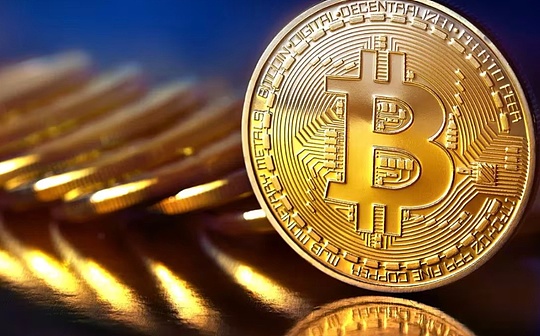Ethereum’s Revival Battle: Lubin leads the 425 million vault strategy

Reprinted from jinse
06/11/2025·5DAuthor: Prathik Desai Compiled by: Block unicorn
Preface
Two weeks ago, Ethereum co-founder and founder and CEO of ConsenSys announced that he will serve as chairman of SharpLink Gaming’s board of directors and lead its $425 million Ethereum vault strategy.
This move adds a new chapter to the revival of the world's second largest cryptocurrency, Ethereum, which has been hovering below $3,000 for more than four months.
This move is exactly the same as Michael Saylor's strategy for promoting, whose financial strategy focused on Bitcoin has inspired a large number of listed companies to participate in the construction of Bitcoin vaults.
In this article, we analyzed whether this is one of the best opportunities for the Ethereum revival.
Ethereum Vault
When SharpLink Gaming announced funding to build an Ethereum vault, the market responded quickly and clearly.
Its share price soared more than 450% in one day, from $6.63 per share to more than $35. In five trading days, the stock price soared more than 17 times from $6.63. Even after the pullback, its trading price is still more than 3 times higher than when the rise started.

What is the reason for this rise?
It is believed that Lubin can help SharpLink replicate Saylor's success in Strategy (formerly MicroStrategy).
Ethereum makes Lubin better than the Bitcoin vault in at least one aspect: building an active ETH vault that not only stores value like Bitcoin, but also creates more value.
How to do it?
Active vault theory
The difference between Bitcoin and Ethereum vault strategies is significant. The logic of the Bitcoin vault is simple: buy Bitcoin, hold Bitcoin, and enjoy price appreciation. This method is elegant and simple, but is passive in nature.
Ethereum’s vault strategy is different from Bitcoin: most ETH tokens will be used for staking, creating the “high beta, profitable ETH leverage” described by Ethereum core developer Eric Conner.
The pledge strategy will transform the enterprise vault from a static vault to an active player in cybersecurity.
Strategy's Bitcoin holdings generate no native returns, but SharpLink's staking ETH will earn at least 2% each year, while enhancing Ethereum's consensus mechanism.
Conner also mentioned that the "flywheel effect" is a key advantage of the ETH vault.
Businesses can raise cash at a price below the net asset value, buy and pledge ETH, and then raise more cash and repeat the process if the stock trades above the value of ETH per share. This is a classic Strategy cycle, but its super profitability is something that Bitcoin vault cannot replicate.
The advantages are far more than basic pledges.
The Decentralized Finance (DeFi) protocol provides additional profit strategies through lending, liquidity provision, and complex financial instruments that do not exist in the Bitcoin ecosystem. SharpLink is backed by DeFi-savvy companies like ParaFi Capital and Galaxy Digital, showing that they understand this potential.
ETH and BTC's vault

Ethereum’s initial token offering (ICO) in 2014 raised $18 million. ETH was priced between $0.30 and $0.40 at the time, laying the foundation for today's Ethereum ecosystem worth more than $320 billion.
SharpLink’s commitment of $425 million is more than 20 times the ICO’s fundraising, enough to acquire more than 150,000 ETH at current prices. But this still only accounts for 0.25% of the ETH sold during the ICO.
The 2014 ICO laid the foundation for Ethereum. Current vault strategies may validate their maturity as an institutional asset and contribute to the construction of financial infrastructure over the next decade.
Institutional craze
In addition to the vault strategy, Ethereum ETF has also continued to record inflows in institutional channels in the past two weeks.
As of June 9, Ethereum ETF recorded net inflows for 16 consecutive trading days, the second longest consecutive gain since its approval in July 2024.

Inflows of $281 million and $285 million were recorded inflows in the past two weeks, making it the best two weeks for the Ethereum ETF in four months.
BlackRock, the world's largest asset manager, has accumulated more than $500 million worth of ETH in 11 trading days. Its ETHA ETF now manages nearly $4 billion in assets.
"In the past 20 days, ETH ETF inflows reached $815 million, and annual net inflows turned positive, reaching $658 million," analysts Bernstein said in a recent study.
CoinShares said a total of $1.5 billion inflows of ETFs for seven consecutive weeks marked a "significant recovery in investor sentiment."
Ethereum-based products now account for 10.5% of the total asset management scale of crypto ETP.
"The narrative surrounding the accumulation of value of public blockchain networks is at a critical turning point," and this "begins to reflect investors' interest in the inflow of ETH ETFs," Bernstein said.
Our Views
Lubin’s move at SharpLink not only brought direct financial impact, but also marked the evolution of Ethereum from speculative technology to important financial infrastructure.
When payment giants such as Visa and Mastercard develop stablecoin strategies, when Coinbase builds merchant payment systems, when Robinhood plans to launch tokenized assets—they are essentially betting on the track of Ethereum.
This may be what Bernstein calls a "key turning point", that is, the moment when the blockchain network changes.
The timing seems to be thoughtful.
As stablecoin legislation is advanced in Congress and regulatory clarity emerges, institutional investors finally have the framework needed for confident allocation. Circle successfully IPOed this week, with a closing price of 160% higher than the listing price, showing Wall Street's enthusiasm for investment in crypto infrastructure.
For Ethereum, the adoption of corporate vaults, inflow of institutional ETFs and the convergence of regulatory clarity have created conditions that did not exist in previous cycles.
If SharpLink's experiment is successful, it may trigger a "domino effect" adopted by companies, just like Saylor's Strategy did with Bitcoin. Given that Bitcoin’s similar risk models have proven to be controllable, Ethereum adoption may be faster and larger in scale.
In addition to corporate adoption, if BlackRock continues to increase its holdings and regulatory clarity consolidates as expected, Lubin's move could be remembered as the first step towards the institutional chapter of Ethereum.



 chaincatcher
chaincatcher
